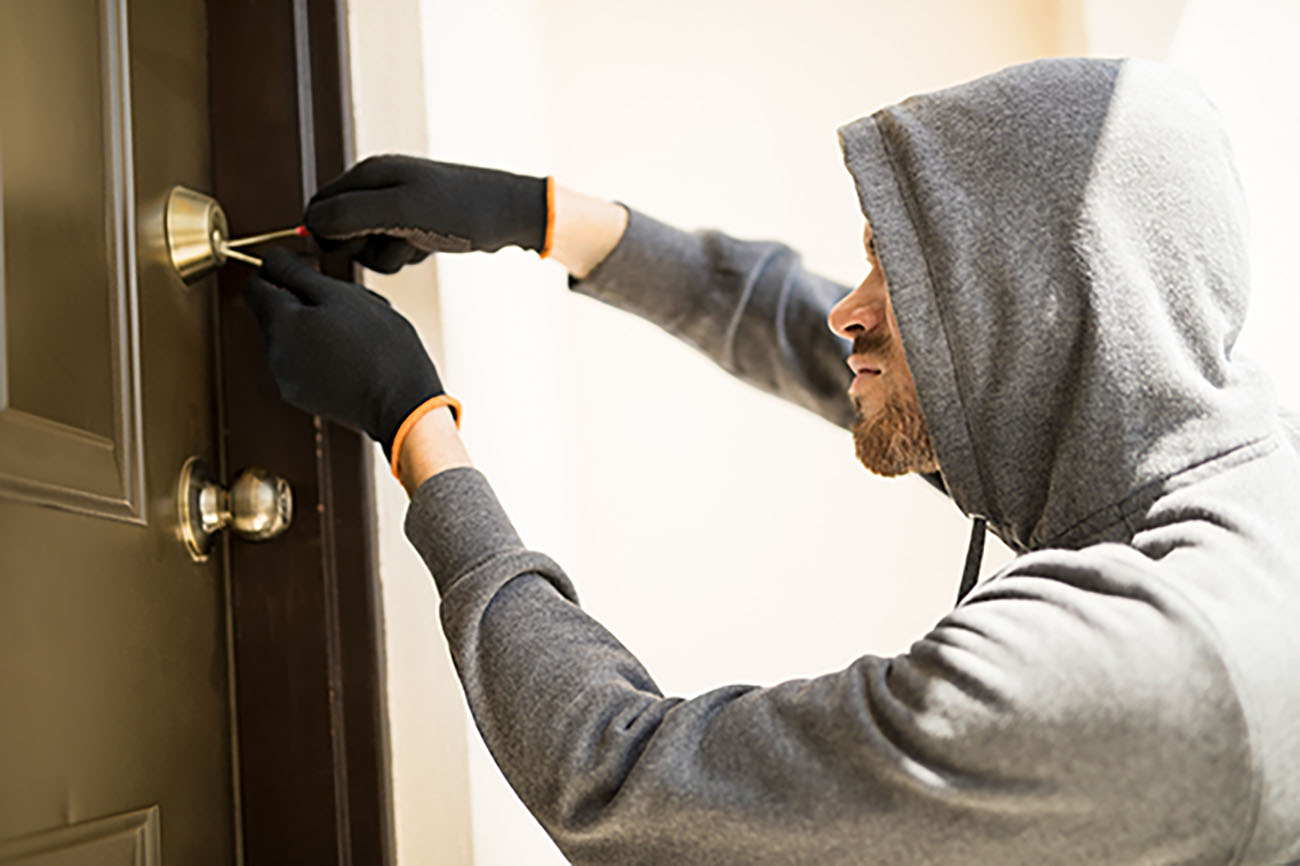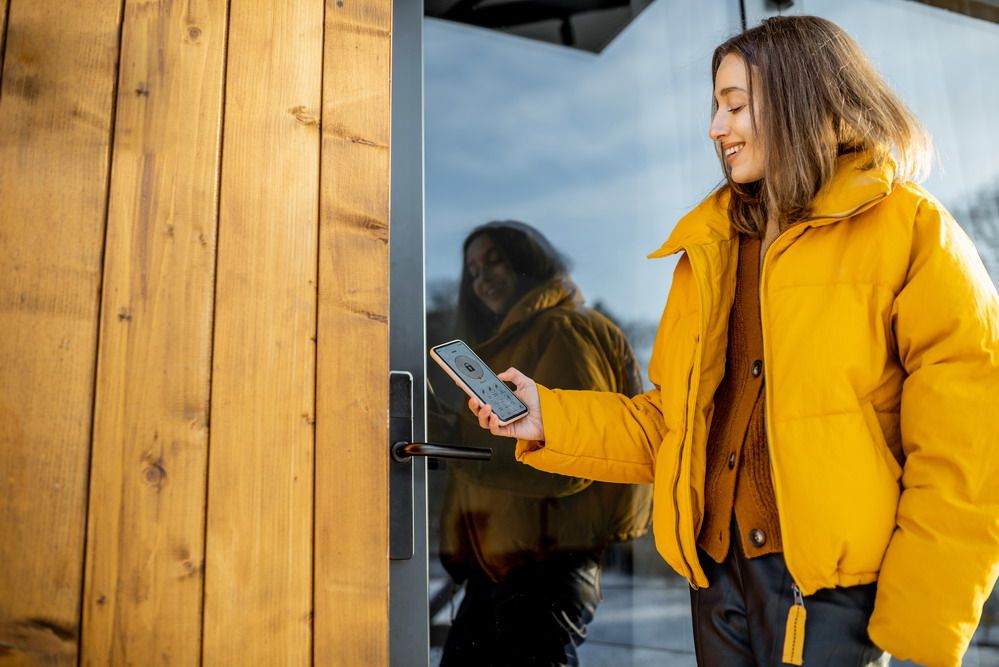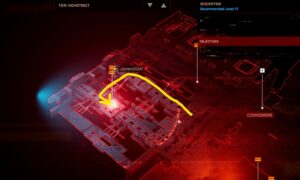Video cameras and smart speakers remain pretty popular among homeowners looking to invest in home automation. But another hot item is the smart lock. So much so that a recent industry report suggests that the global smart lock market will grow to more than $18 billion over the next decade. So what is going on?
Smart locks are one of the more recent editions to the home security ecosystem. But they are also being promoted as home automation devices. Consumers seemed to like them for a number of different reasons. The question is why they like them enough to lead to 15.1% CAGR over the next ten years.
4 Key Factors Fueling Growth

smart lock technology
For the record, the previously mentioned market research report comes from Future Market Insights. Their report on the global smart locks market is just one of several similar reports showing just how popular smart locks are. The report offers four key factors they believe are fueling market growth:
1. Urbanization and Smart Cities
The push for greater urbanization and smart cities around the world is largely rooted in technology. City planners are looking at all sorts of digital devices, networks, and software to make urban living safer and more convenient. It is logical that they would stress home automation for both single and multi-family dwellings.
A smart lock is a fundamental yet useful piece of technology that fits right in with the smart city concept. With smart locks, you eliminate dependence on keys. You also create a more secure entryway that can be monitored remotely.
2. Home Automation Adoption
Even in countries where urbanization and smart cities are not a priority, home automation is growing in popularity. Younger generations are swift to adopt home automation technology. Their older counterparts, while somewhat skeptical, are still getting on the smart home bandwagon.
For the typical homeowner, a smart lock represents an entry level device that doesn’t require extensive programming or an in-depth knowledge of how smart home tech works. Smart locks are as easy to install as a traditional keyed lock. And anyone who knows his way around a smartphone can activate a smart lock fairly quickly.
3. Rising Concerns About Crime

Source:freepik.com
The Future Market Insights report indicates a rising concern about crimes like burglary and theft. Moreover, the concern is not limited to the U.S. It is a concern globally.
Whatever people are worried about security at home, they take steps to make themselves safer. Some perceive installing a smart lock as one such step. A smart lock offers controlled access that can be modified remotely. Better yet, smart locks can send alerts to homeowners whenever they are activated or deactivated.
In conjunction with video cameras, smart locks on all first-floor doors can give a homeowner tremendous peace of mind. At a time when more are concerned about burglary and theft, it is understandable some would invest in smart blocks.
4. Technological Innovation
The fourth key factor cited in the report is technological innovation. As technology improves, smart locks become even more capable. For example, it is now possible to link a smart lock to a homeowner’s phone via the phone’s GPS. Why does that matter?
By linking the two, geolocation technology makes it possible to activate and deactivate a smart lock based on the homeowner’s physical location. Locks can be programmed to deactivate as a homeowner turns onto his street. They can be programmed to activate as he pulls out of the driveway.
Integrating a smart lock into a whole-home automation system has other benefits as well. For instance, imagine issuing a single verbal command that turns out all the lights and locks all the doors simultaneously. A homeowner no longer needs to walk around the house doing things manually. With a single command, he can button up the house as he climbs into bed.
Various Means of Entry
Consumers who have never experienced a smart lock first-hand may not realize how many different options there are for entry. Your typical baseline smart lock relies on a keypad. The lock is programmed with a four- or six-digit PIN for gaining access. The homeowner simply enters that number on the keypad to unlock the door.
Keypad-enabled systems generally allow for multiple PINs. That way, each member of the family can have a unique number for tracking purposes. Homeowners can even provide temporary numbers to visiting guests.
Other entry options include:
- Smart Phone – Nearly every smart lock on the market can be activated and deactivated using a smartphone. A companion mobile app does the trick. With just a tap or swipe, the lock can be activated or deactivated.
- Biometric ID – More advanced smart locks can be activated and deactivated with a biometric ID. Some are equipped with retina scanners while others rely on fingerprints. Still others utilize video cameras and facial recognition software.
It is important to note that a good smart lock still comes with keyed access. That way, a homeowner is not locked out of his house should the batteries in the smart lock die. For me personally, it wouldn’t make sense to invest in a smart lock I couldn’t unlock with a key. I want the option to do so.
Options for Installation

smart lock
When it comes to installation options, many homeowners will purchase a standalone smart lock they install themselves. Others will include smart locks as part of a home security or automation package from a well-known provider like Vivint.
It makes sense to purchase smart locks as part of a broader package if one plans to automate multiple aspects of the home. Investing in a package means getting devices known to be compatible with one another. And if a consumer goes with a brand like Vivint, professional installation is available.
Data suggests that smart locks are among the hottest devices in home automation right now. Homeowners apparently want them as much as they want video cameras and smart speakers. As a homeowner, what are your thoughts on the matter?
















